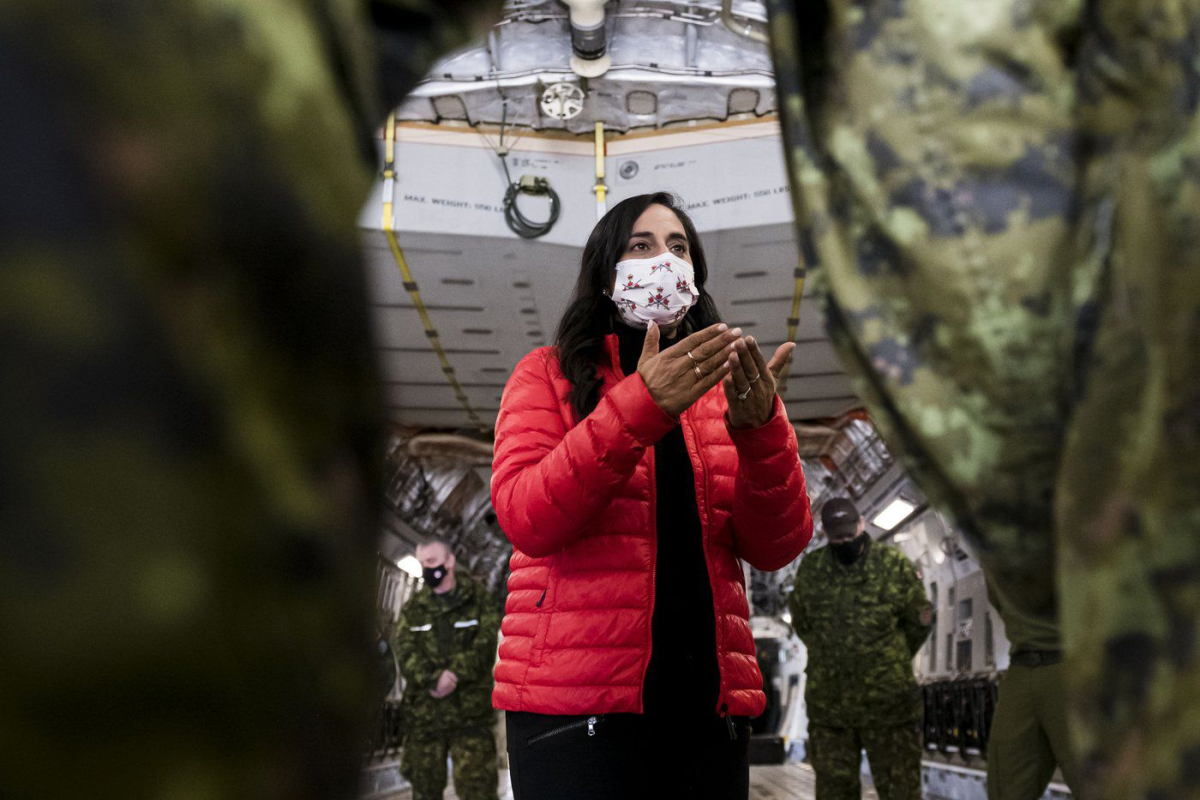Support strong Canadian climate journalism for 2025
The parliamentary budget officer says the federal government would need to spend an additional $75.3 billion on defence over the next five years for Canada to reach NATO’s target of two per cent of GDP.
Yves Giroux released an independent forecast Thursday of the military expenditures needed for Canada to meet the target, agreed to by NATO members in 2006.
Based on government figures, Giroux forecasts that Canada’s total military spending will increase from $36.3 billion in the 2022-23 fiscal year to approximately $51 billion in 2026-27.
Canada has faced growing calls to boost its defence spending to meet the NATO target in light of Russia’s invasion of Ukraine.
The Liberal government spent an estimated 1.36 per cent of Canada’s GDP on the military last year, with only four other NATO members having spent less: Belgium, Luxembourg, Slovenia and Spain.
Giroux says in a statement that the target of two per cent of GDP remains out of reach over the medium term, but the gap between Canada’s spending and the benchmark is projected to decrease over the next five years.
Canada's defence spending increased 67 per cent between 2014 and 2021, the report said, with about half of that spent on personnel.
NATO also agreed that equipment should make up at least one-fifth of overall spending. Canada is now at 18 per cent, but Giroux notes NATO uses budgeted figures in its calculations, and delays in equipment acquisitions may not be accounted for.
Giroux also notes that there are shortcomings to setting a spending target as a percentage of GDP, including that the ratio will vary "based on factors unrelated to defence capacity, such as inflation, fluctuations in exchange rates, and economic conditions both domestic and global."
This report by The Canadian Press was first published June 9, 2022.




Comments
How about a report on the foreign aid gap since there is also an internationally agreed target of .7%:
CIDA – Lester Pearson and .7%
http://www.glenpearson.ca/2009/08/cida-lester-pearson-and-7/
Pearson introduced the .7 target in a report published shortly after his retirement from politics. It was robust yet many thought it do-able, despite the hefty costs.
***
Far from being unrealistic, Lester B. Pearson’s lofty target is more viable today than back in the 1960s, as terrorism finds root among the bottom billion.
And how about comparing the amounts the world spends on militarism with the amount given to the United Nations to prevent wars?
Since 2000, world military expenditures have nearly doubled and now amount to about $2 trillion per year, more than half of which is accounted by NATO countries. In contrast, only about 3% of this total is devoted to the entire body of work of the United Nations, including peacekeeping and the sweeping social and economic operations of 40 specialized agencies and programs.
According to former Senator Douglas Roche, the route to world peace demands a wider agenda than our willingness to fight. Canada's strength has been its ability as a middle power to help mediate disputes through diplomacy and to strengthen international law with important breakthroughs such as the Land Mines Treaty and the International Criminal Court.
Roche agrees that Putin must be stopped in Ukraine, but stresses we must not ignore strengthening the peace-building capacity of the United Nations which once again has been swept aside amid vociferous calls to escalate the arms race.
Footnotes:
1. Canada’s middle power diplomacy is far from ‘errant nonsense’, DOUGLAS ROCHE
https://www.hilltimes.com/2022/03/30/canadas-middle-power-diplomacy-is-…
"It is not more money that NATO needs, rather new thinking to plan a common security agenda. Militarism has never gotten us far."
2. The UN system is the name given to a complex group of organizations, institutions and entities.
https://unsceb.org/total-expenses
All values are in USD.
Year Total expenses
2020 56,207,923,008
3. A Small Cut in World Military Spending Could Help Fund Climate, Health and Poverty Solutions
https://www.scientificamerican.com/article/a-small-cut-in-world-militar…
"The world’s military expenditure has nearly doubled since 2000. It now amounts to about $2 trillion per year, more than half of which is from NATO countries.
***
Military spending increases may seem like a natural—even commendable—response to the Ukraine crisis. In reality, growing military budgets have persisted for decades despite macroeconomic or geopolitical trends. In 2020, for instance—the year 120 million people were pushed into poverty by a 4.4 percent recession and 98 million people were directly affected by storms, floods and other climate disasters—military expenditures continued to increase by an average of 2.6 percent worldwide.
Our house is burning, and instead of coming together to stanch the flames, we are busy building nuclear submarines, hypersonic missiles and other weapons of doom."